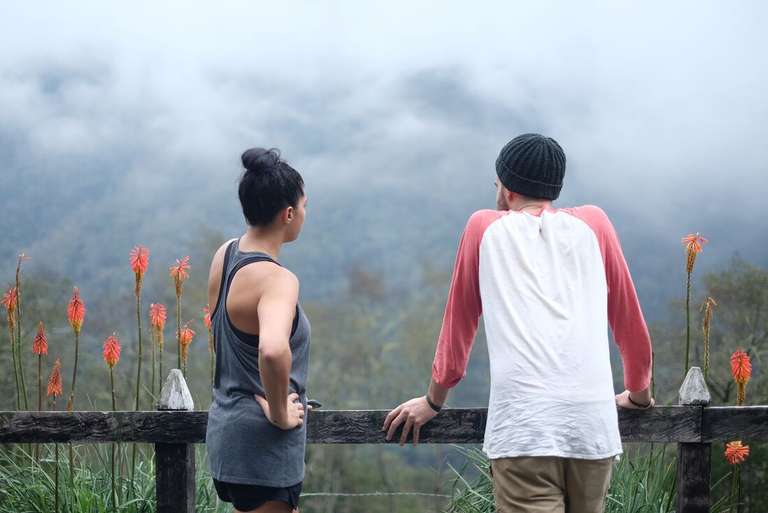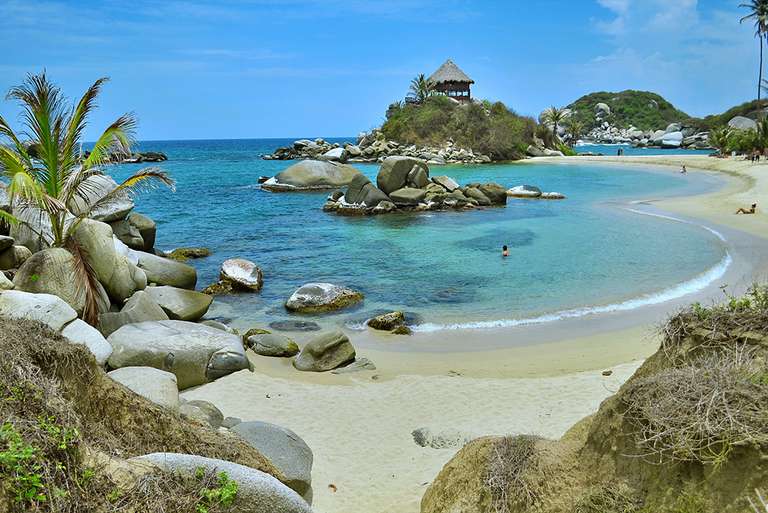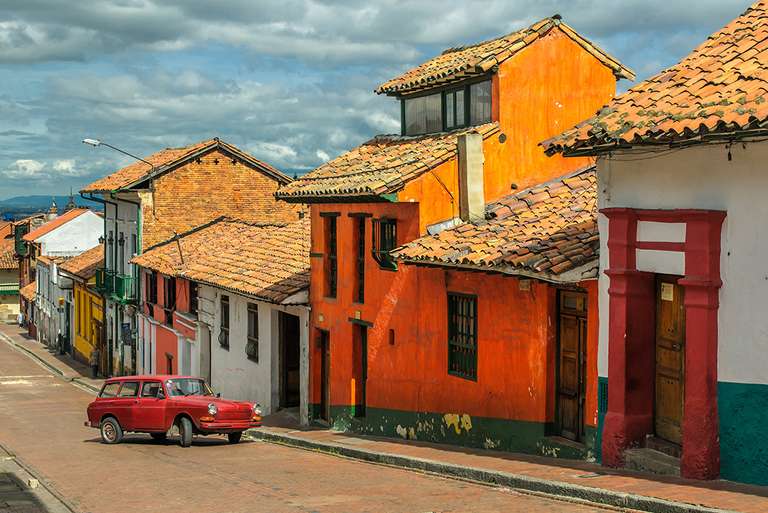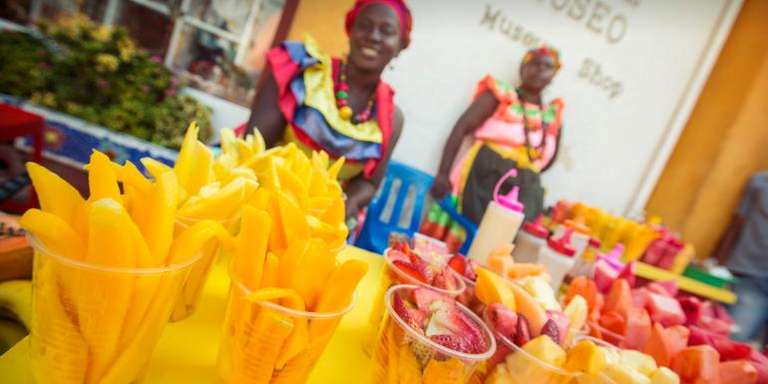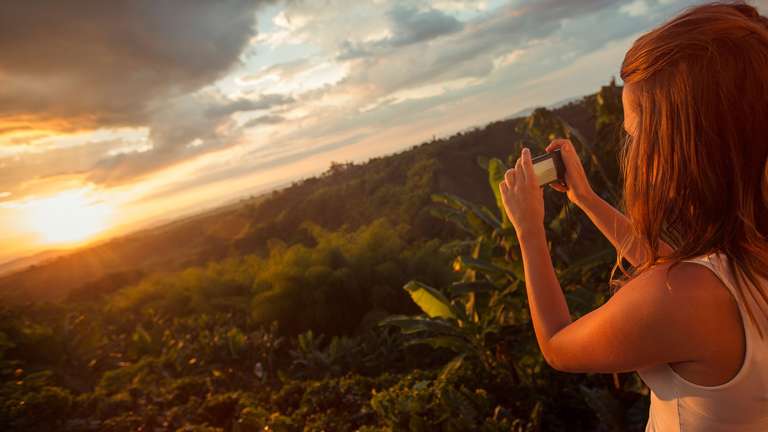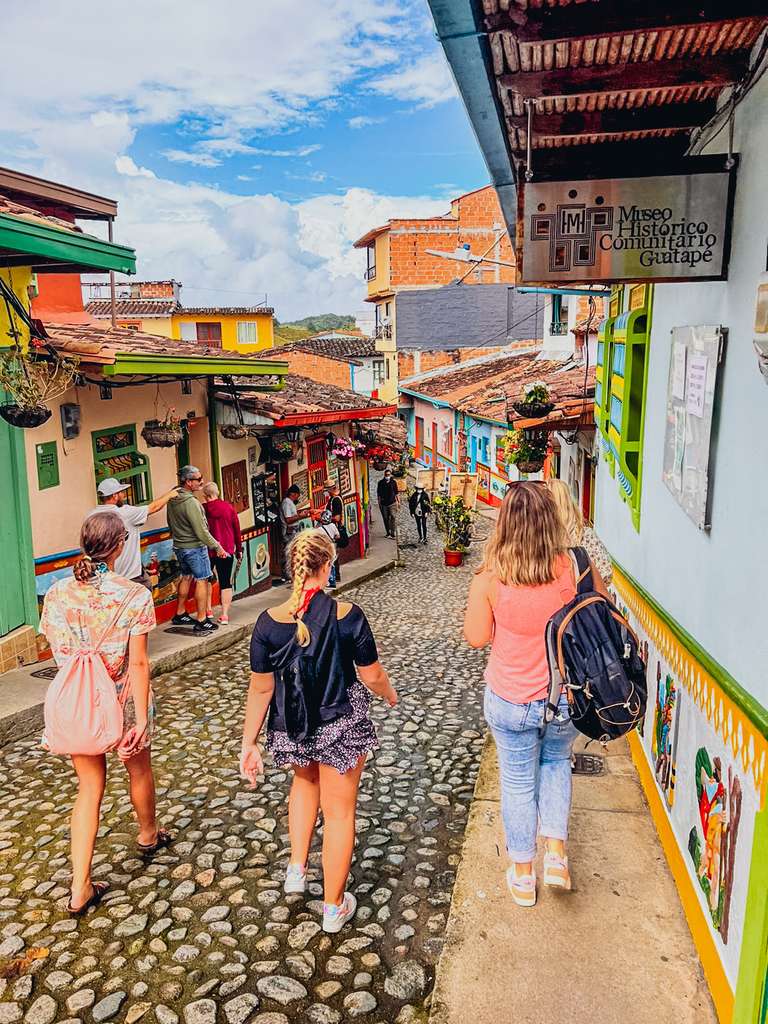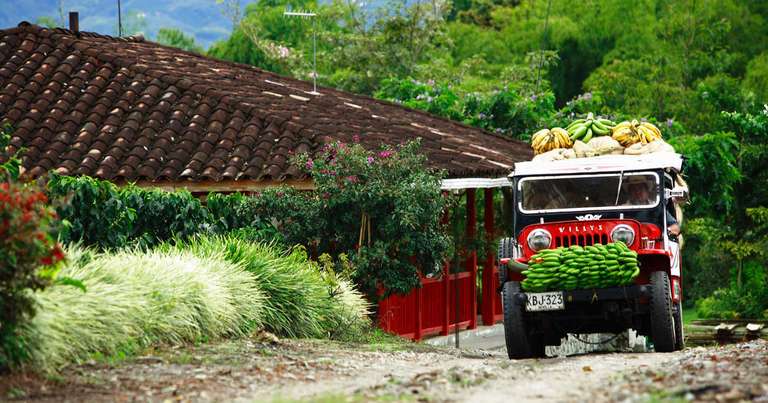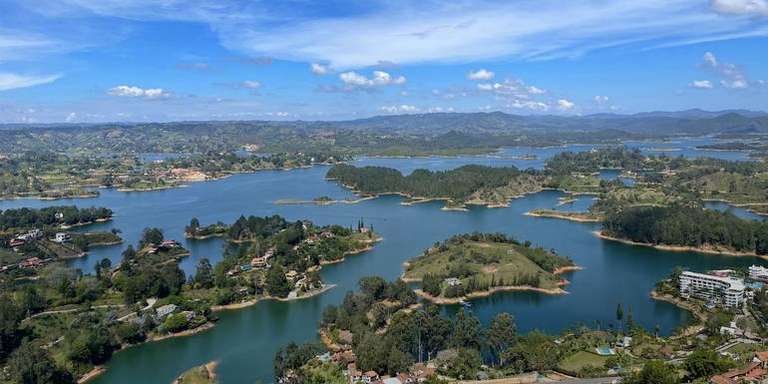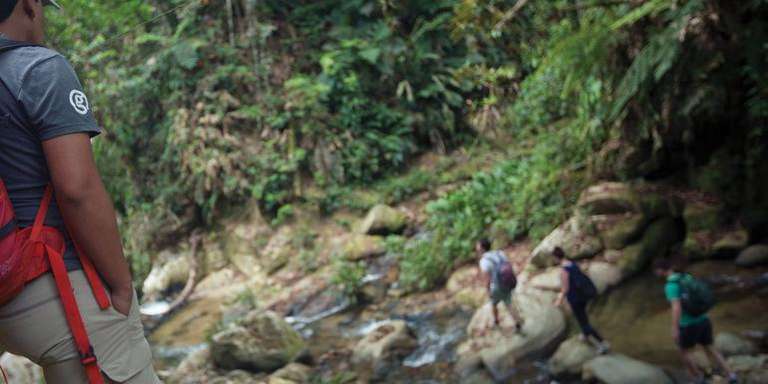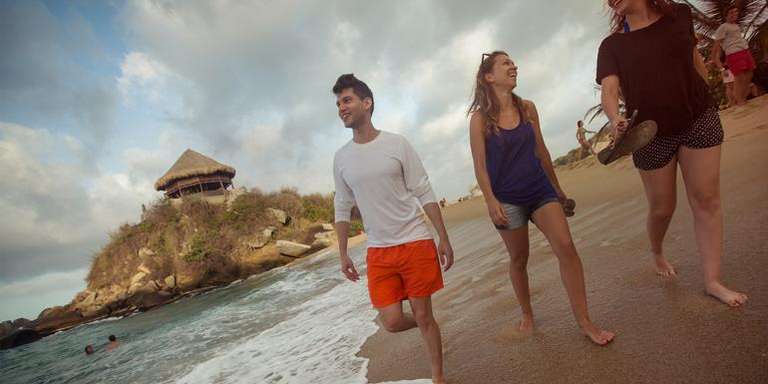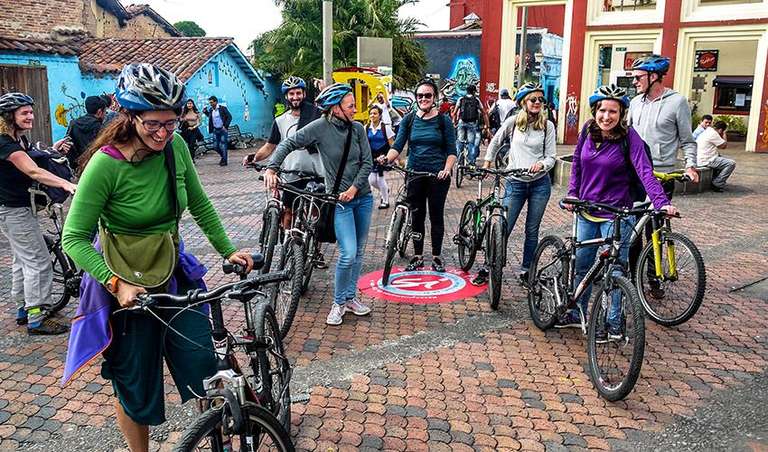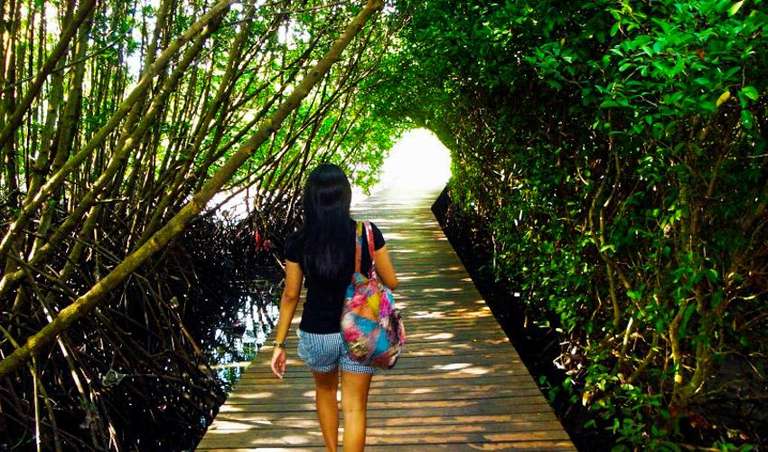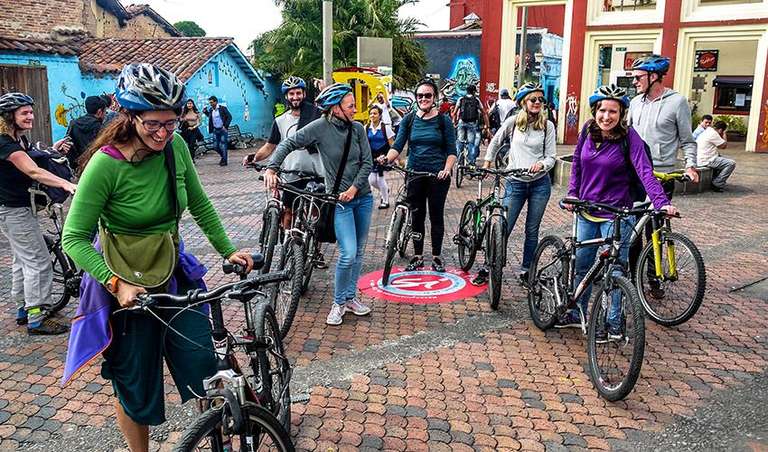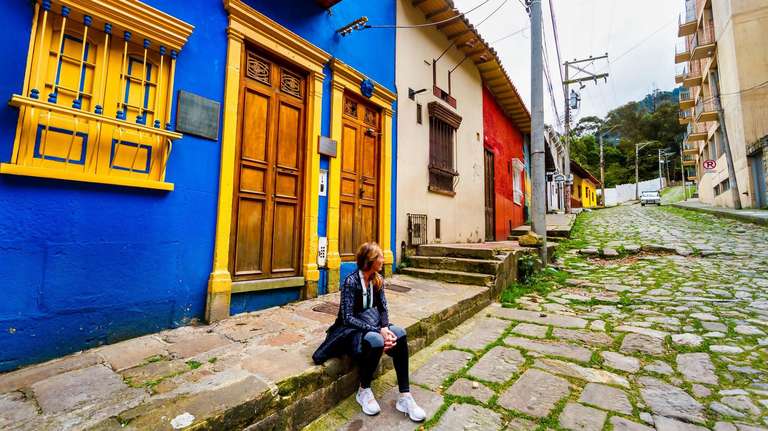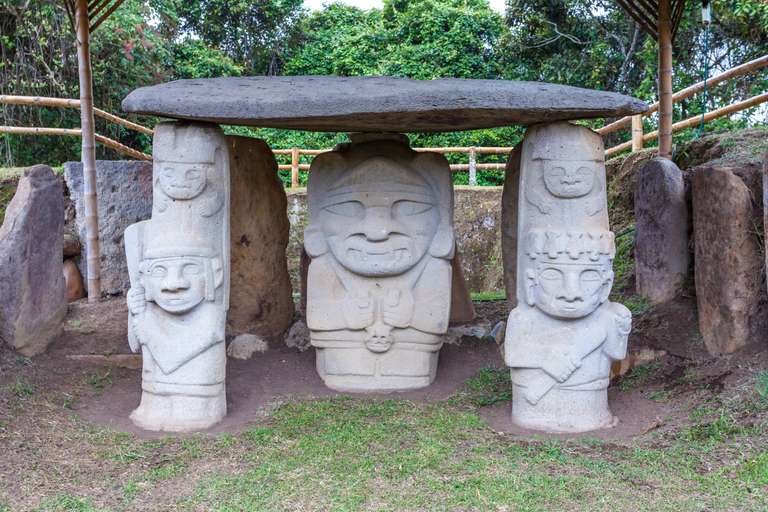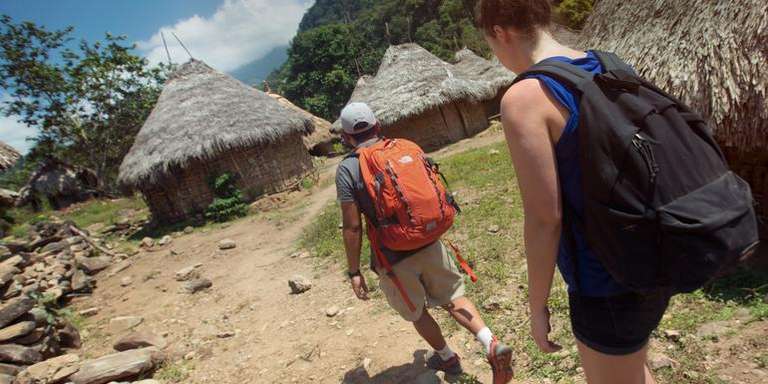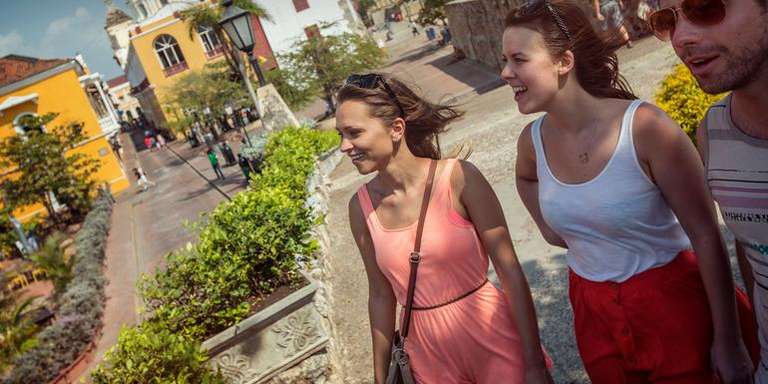Things to Do in Colombia
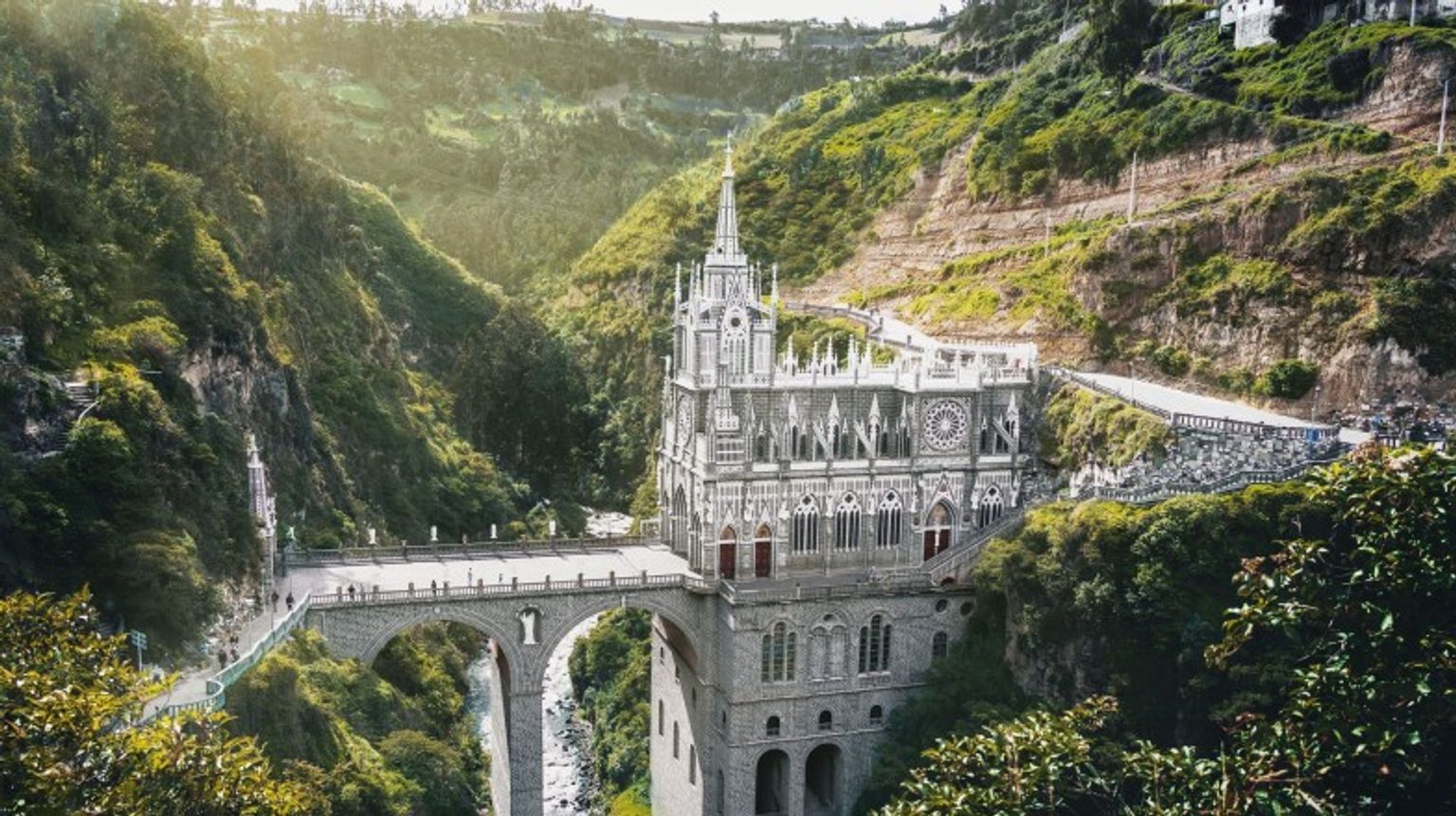
- Niklas Schneid
- From Germany
- Niklas Schneid
- From Germany
- Thorben Thiel
- From Germany
- Tash Johnson
- From England
1. Check out the rich history and architecture at Cartagena
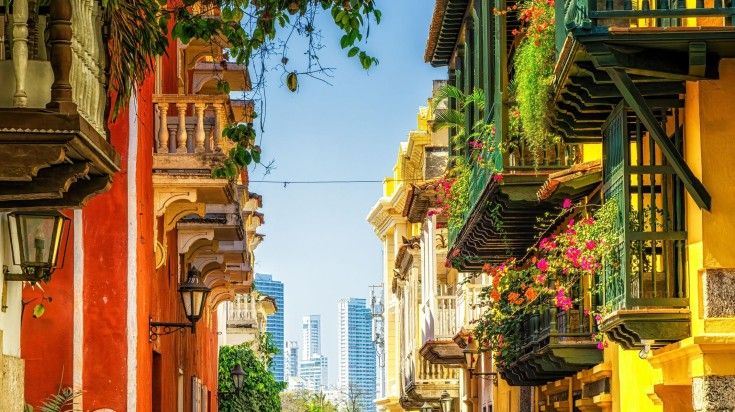
Cartagena’s mix of historic fortifications, Spanish Colonial architecture and glorious beaches make it one of Colombia’s most visited cities. Enter the walled old town, a UNESCO World Heritage Site, through the clock tower gate, and stroll around its cobbled streets where quaint horse-drawn carriages still run like in the old days. Top-rated sites to visit on a Cartagena trip include Las Bóvedas, an 18th-century dungeon, and the Palace of the Inquisition, now a museum displaying torture instruments. One of the coolest things to do in Cartagena is to hop on a bus tour to Castillo San Felipe de Barajas, where you can explore the secret tunnels of the Grand Fort.
Alternative destinations:
- Honda: Founded in 1539 and known as the city of bridges, Honda was once an important port along the Magdalena River. Its historical center has some beautifully preserved buildings and an intriguing museum that tells stories about the people who have lived on the river banks. Also, check out Honda’s main market plaza, which has 148 columns and was built between 1917 and 1935 on the site of a Franciscan convent.
- Jardín: Famous for its cobblestone streets and well-preserved colonial buildings with colorful doors and whitewashed walls, Jardín is a delightful and laidback little town. Don’t miss the neo-gothic Basilica of the Immaculate Conception and the centrally located Plaza El Libertador, declared a National Monument in 1985. Take the La Garrucha cable car for excellent views of the town and the surrounding countryside.
- Pereira: This is a commercially important city in Colombia’s coffee region. The top-rated things to do in Pereira include a visit to the fine Museo de Arte de Pereira, which showcases works by South American artists. Also, look out for the striking 8.5 meter-high bronze statue of the ‘Liberator,’ depicted naked on horseback.
Best season: December to April. This dry season coincides with Cartagena’s summer, characterized by clear skies and dry, sunny days.
Insider tip: Located just outside the walled city, Getsemani is a lovely neighborhood to explore. It is filled with beautiful street art and is home to a vibrant coffee culture.
2. Be surrounded by nature in Medellín
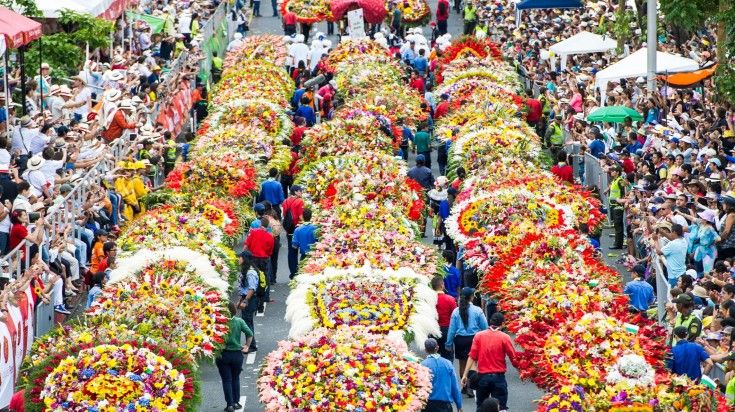
Take the scenic cable ride during a trip to Medellín, ‘the City of the Eternal Spring,’ to Parque Arví, a 17.6 square kilometer reserve known for its pine and eucalyptus trees, hiking trails and lakes. The park also has a butterfly enclosure and many lookout points. You can also admire the hundreds of blooms at the flower market at Medellín’s Placita de Flórez. If you’re in the city in August, don’t miss the beautiful Flower Festival. Visit the Joaquín Antonio Uribe Botanical Garden for its flowers and orchid garden. It’s also a pleasant picnic spot. There are plenty of amazing things to do in Medellín.
Alternative destination:
- Parque Nacional Natural Tayrona: Known for its gorgeous white-sand beaches, rock formations, and virgin rainforest, the 12,000-hectare Tayrona National Natural Park is one of Colombia’s most beautiful natural spaces. A popular trail from the entrance into the park goes past the lovely coast, touching several beaches. Swimming and snorkeling are allowed on select beaches. You might spot the critically endangered tamarins on the route.
Best season: December to March. This is the dry season, and there is a tourist rush. The summer months (June to August) also experience less rainfall and are considered the shoulder season for travel.
Insider tip: Visit a finca or coffee farm on the lush slopes near Medellín.
3. Witness the bustling city life in Bogotá
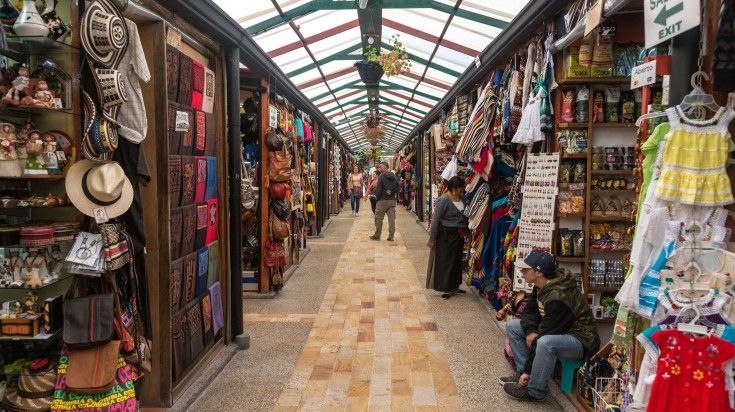
Walking through Usaquén, a historical suburb packed with antique shops and cute cafés, is one of the most memorable things to do in Bogotá, Colombia’s capital. Admire the grand colonial mansions of La Candelaria and go on a graffiti tour of the neighborhood. Check out the city’s buzzing Emerald Market with its wide range of good-quality stones. Take a cable car to the peak of Monserrate Hill for great views during a Bogota trip.
Alternative destination:
- Cali: Cali, Colombia’s third-most-populated city, is celebrated for its salsa music, dance and nightlife. But it’s not all about partying. The city has a rich Afro-Colombian culture, and one of the interesting things to do in Cali is stroll around its elegant historic center, home to museums like the La Tertulia Museum, which often displays new works by Colombian artists. A few hours away from the city lies the San Agustín Archaeological Park, a UNESCO World Heritage Site famous for its megalithic sculptures.
Best season: December to March. Though rainfall is common in Bogotá throughout the year because of its elevation, it’s rare between December and March. There is also a tourist rush in July and August because of the Bogotá Carnival, but you’re likely to encounter more rain during these months.
Insider tip: Opened in 1836, Bogotá’s Cementerio Central is Colombia’s most famous cemetery and the final resting place for presidents and poets. It's worth checking out.
4. Go trekking in Santa Marta
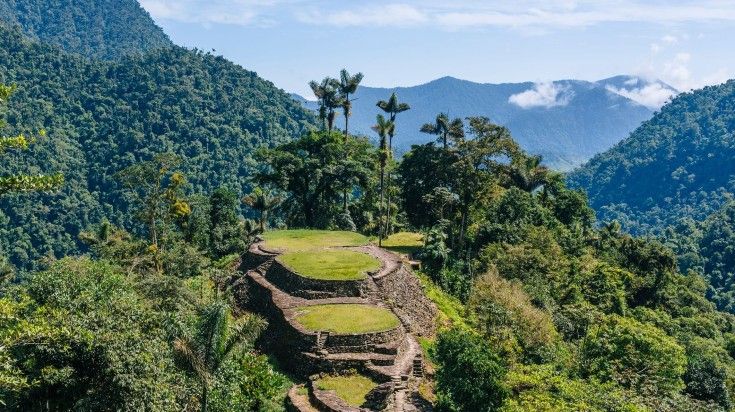
The Sierra Nevada de Santa Marta mountains are a wonderland full of stunning landscapes. Top-rated treks include the Lost City trek or Ciudad Perdida, a four-day hike through the jungles that includes some challenging river crossings. Minca is a starting point for trails for all skill levels. One of the most popular things to do in Santa Marta is the trek to Cerro Kennedy, which can be done as a day or overnight trip. The views of Colombia’s two tallest mountains from the top are a treat.
Alternative destinations:
- Parque Nacional Natural Los Nevados: One of the best things to do in Colombia is explore the Parque Nacional Natural Los Nevados. The national park has a rare sight: snow peaks in the tropics. The park is also home to an active volcano, Nevado del Ruiz, but you can climb only some areas of this zone because of the danger of eruption. Luckily, there are plenty of spectacular hiking options in the southern part of the park, including treks to Lake Otún and Paramillo del Quindío, an inactive volcano.
Best season: December to February. The dry weather during these months is ideal for a hiking tour in Santa Marta. June to August is the second best time of year for trekking.
Insider tip: It’s not permitted to do the Lost City trek solo or independently. You can only do it as part of a tour with an approved company.
5. Relax at the popular beaches at San Andrés
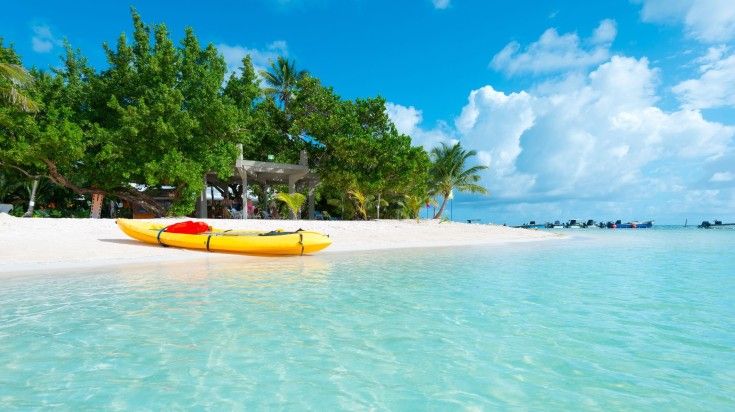
Located about 800 kilometers from mainland Colombia, the island of San Andrés has a relaxed Caribbean vibe despite the influx of tourists from the mainland. Playa Spratt Bight is San Andrés’s main beach and tends to get crowded. But its white sand, clear waters and plenty of eating and drinking options make it worth exploring. The long white beach at the coastal village of San Luis is quieter than the northern beaches and is fast emerging as a snorkeling destination. Check out our beach tours in Colombia.
Alternative destinations:
- Playa Blanca at Isla de Barú: Playa Blanca is on an island connected by a bridge to the mainland. Besides its clear waters and white sand, it’s the perfect place to find shade and sip on sweet coconut drinks.
- Playas de Palomino: If you’re looking for quieter and cleaner beaches, head to Palomino on Colombia’s Caribbean coast. Playas de Palomino has sand stretching for miles, punctuated by palm trees.
Best season: January to April. Though San Andrés is a year-round destination, you won’t have to worry too much about thunderstorms from January to April.
Insider tip: Seeing iguanas should be on your bucket list of things to do in San Andrés. Head to the picturesque Haynes Cay, a small, rocky island, to spot these large lizards.
Related article:
10 Best Beaches in Colombia
6. Visit the coffee plantations in Salento
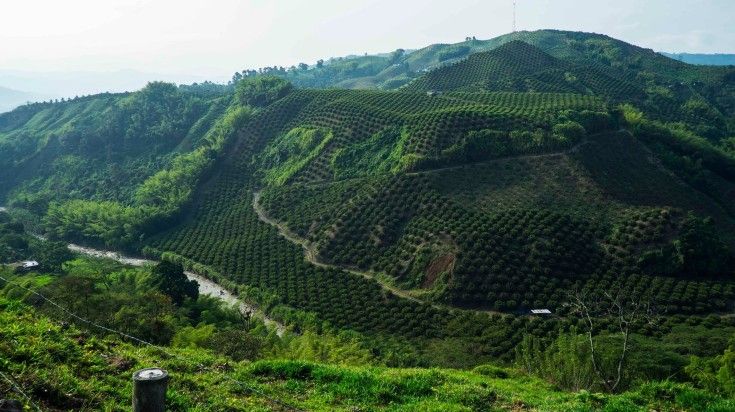
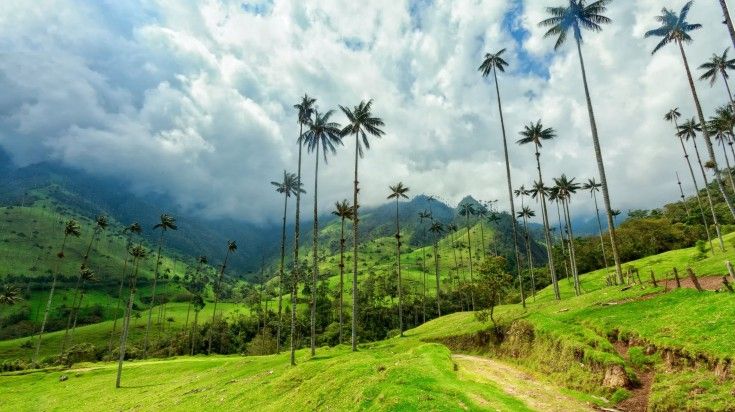
Salento and its surrounding areas are a UNESCO World Heritage Site and part of the country’s coffee cultural landscape. If you want to understand Colombian coffee culture, a trip to Salento offers several excellent things to do in Colombia. Some highly-rated coffee plantations where you can learn about the coffee-making process include Finca El Ocaso, the Plantation House, and the Don Elias coffee farm. You can also visit family-owned fincas (coffee farms) as part of the delightful walking loop called the Coffee Route (Ruta Cafecito).
Alternative destinations:
- Pijao: Surrounded by lush mountains, Pijao offers tourists an authentic and quieter immersion into Colombia’s coffee culture. Besides trying out the excellent local coffee, you can also go trekking and mountain biking.
- Montenegro: A hub for agritourism, Montenegro is a good place to access coffee plantations. Check out the nearby National Coffee Park, which is home to a museum that explains the region’s coffee plantations and production.
Best season: December to February. Being the official dry season, this is the best time to go on a trip to Salento. However, it can rain in the hills at any time of year. July to September are also relatively dry months.
Insider tip: This may be coffee country but Salento also offers other delights, such as fresh trout. Many local restaurants and establishments serve trout.
7. View the rich biodiversity at the Amazon Rainforest
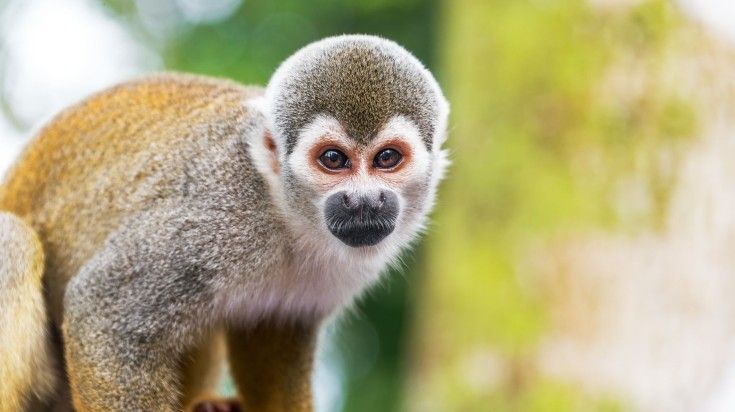
Colombia’s Amazon region is massive, covering roughly one-third of the country’s total area. This vast rainforest is an adventurer’s delight, and you can spot all kinds of creatures here, such as sloths, electric eels, gray dolphins, tree frogs, tarantulas and at least 15 species of monkeys. Visit the 29-hectare Mundo Amazónico to get acquainted with the forest before setting out on your adventure. This nature reserve also has an impressive botanical garden with 700 species of plants. Head to Lago Tarapoto, a lake fed by the Río Amazonas, to spot pink dolphins and manatees and try your hand at piranha fishing.
Alternative destination:
- Cueva de los Guacharos National Natural Park: Besides being Colombia’s oldest national park, Cueva de los Guacharos is part of the Andean Belt, a UNESCO-designated Biosphere Reserve. The park gets its name from guácharo (oilbirds), a bird species that stay in caves during the day and look for food at night. Guided treks are available to some guacharo caves.
Best season: December to March. The rainforest experiences wet weather throughout the year. However, the relatively dry season from December to March is better for exploring the Colombian Amazon.
Insider tip: See the collection of textiles, tools, musical instruments, pottery and other indigenous artifacts at Museo Etnográfico Amazónico, a small museum in Leticia, your gateway to the rainforest.
8. Try watersports at Rosario Islands
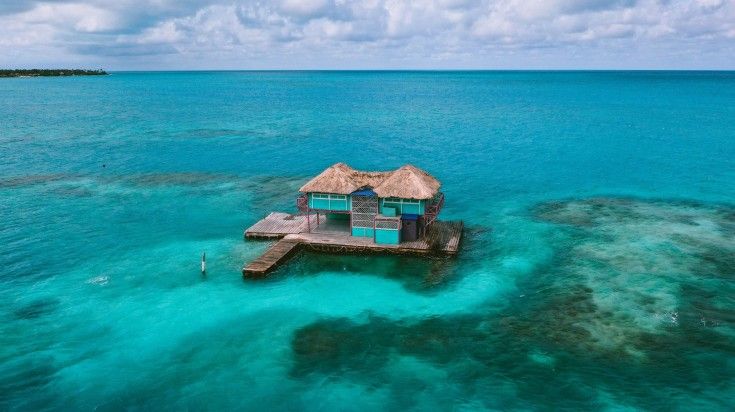
Forty-five minutes by boat from Cartagena, Rosario Islands are an archipelago off the Caribbean coast offering many exciting water-based activities. Take a kayak to explore the sea or paddle through mangroves that connect two lakes. Snorkel amid well-protected coral reefs and dive down to examine the remains of shipwrecks in Isla Barú. Grab a rod and go sport fishing. Check out our tours to Rosario Islands.
Alternative destination:
- San Bernardo archipelago: Hike around the island of Mucura in the San Bernardo archipelago. You can also do a boat trip to other islands of the archipelago, like Tintipan and Santa Cruz del Islote, and go diving amid the coral reefs around San Bernardo. Tintipan has the most beautiful public beach in San Bernardo. Santa Cruz del Islote is an unusual experience for an island; it’s very densely populated, and you’ll get a unique perspective of community life.
Best season: December to April. You can expect the least rainfall and most sunshine during these months.
Insider tip: One of the fun things to do in Colombia at night is head to Laguna Encantada on Isla Grande and swim with sparkling bioluminescent plankton.
9. Immerse yourself in lively festivals at Villa de Leyva
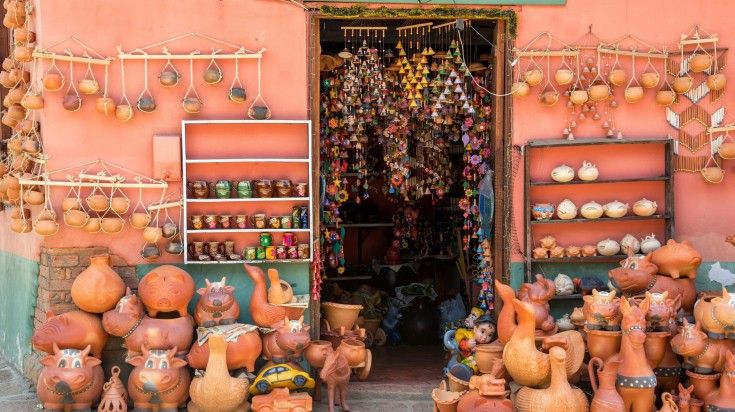
Located in the Colombian Andes, some 7,000 feet above sea level, Villa de Leyva is a town of festivals. No matter when you land here, chances are you’ll be invited to some celebration. The attractions include the Kite Festival, the Noche de las Velitas (Night of Little Candles), the International Jazz Festival, the Poetry Festival, the Tree Festival, and the Horse Festival. There’s a festival for every mood and occasion. There’s also a tomato-throwing festival to look forward to. Here are our tours to Villa de Leyva.
Alternative destination:
- Barranquilla Carnival: For much of the year, there may not be too many things to do in Barranquilla, Colombia’s Carnaval capital. But if your travel dates match, you can’t miss this thrilling carnival on the country’s Caribbean coast. Simply put, it’s the biggest festival in Colombia, with dancing, music, and parades that continue for four days as the city’s streets turn into one big party. In 2003, UNESCO declared the Carnival a Masterpiece of Humanity’s Intangible and Oral Heritage. The Barranquilla Carnival occurs four days before Ash Wednesday (In 2025, the dates are March 1- 4.)
Best season: December to March. This is the dry season and the perfect time to discover Villa de Leyva. However, the festivities never stop in this town, and the rains should not discourage you from planning a trip at any time of year.
Insider tip: Fancy seeing the fossil of a 120 million-year-old Kronosaurus? Check out the El Fósil Museum, six kilometers from Villa de Leyva.
10. Venture off-the-beaten path at Tatacoa Desert
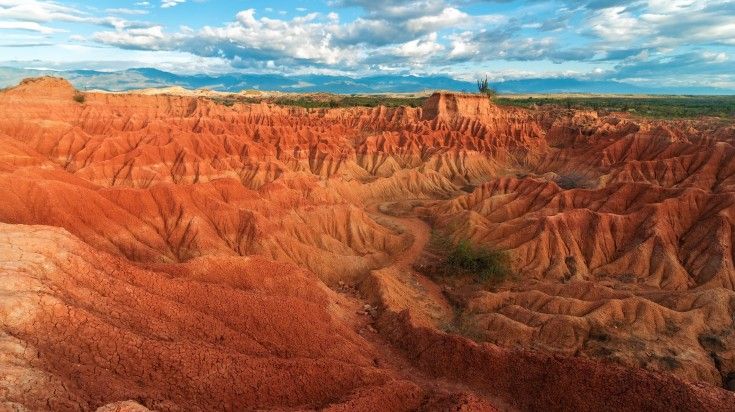
Not a desert in the real sense, Tatacoa will impress you with its striking red and gray landscapes. It’s also a great place to stare into the skies. The Observatorio Astronómico de la Tatacoa is an ideal space for guided stargazing but you can also do it on your own. For excellent views of the desert, head to Ventanas, a lookout point. Also, check out the extraordinary red-rock formations (Cusco Labyrinths) that seem as though they are from another planet. If you’re looking for free things to do in Colombia, nothing beats the experience of seeing this dreamlike terrain.
Best season: December to February. Tatacoa is a year-round destination. But December to February are the dry months and likely to be good for stargazing.
Insider tip: A small museum in La Venta (a remote site in the desert) dedicated to fossils and other finds from the Miocene era is worth checking out.
11. Head to the Pacific Coast for whale watching
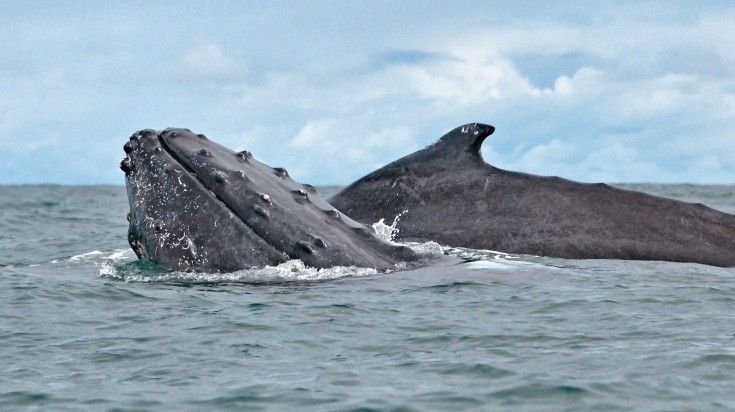
Every summer, tourists descend on coastal towns like Bahia Solano to see the annual humpback whale migration. These remarkable creatures arrive at Colombia’s Pacific Coast in early July after swimming 8,500 kilometers from the icy cold waters of Antarctica. The three top sites for whale watching are Malaga Bay and Nuquí in Chocó, and Gorgona in Cauca.
Best season: July to November. The whales arrive in July in the warm waters of the Colombian coast to mate and stay on till November after their calves are born.
Insider tip: In Gorgona, you can see whales giving birth and calves swimming for the first time.
There are plenty of incredible things to do in Colombia — from whale watching along the Pacific coast and admiring the colonial-era architecture of its cities to stargazing in the desert and wild adventures deep in the Amazon rainforest. Our travel experts will help you create a customized trip to Colombia for that perfect Latin American holiday.


